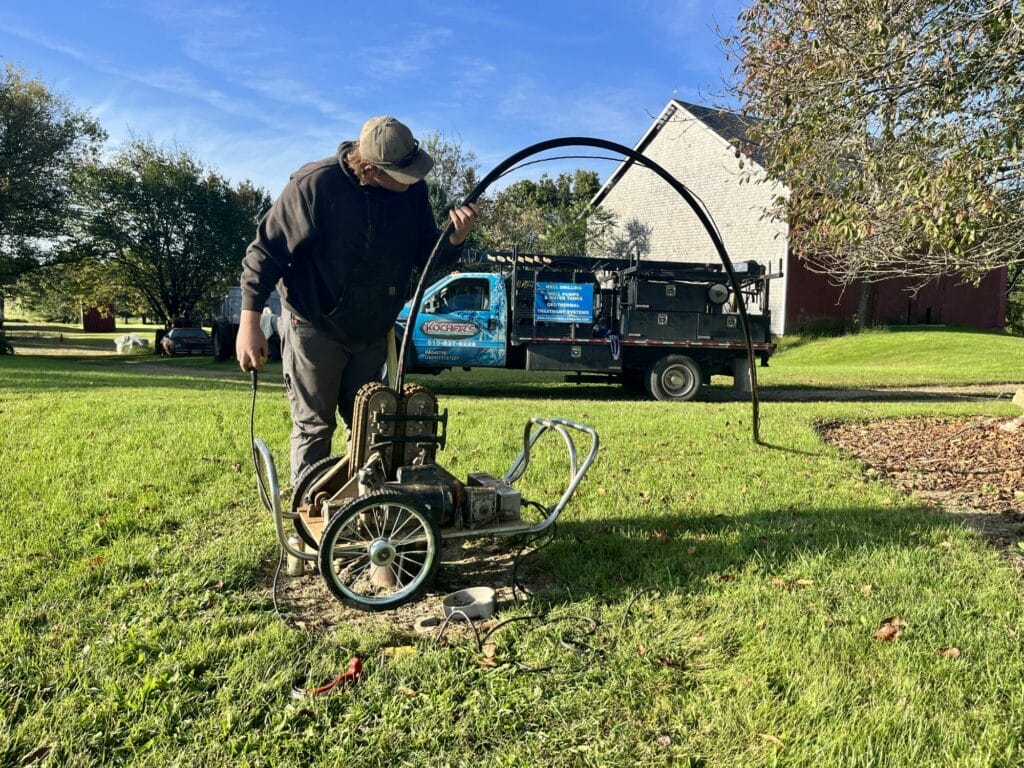Many homeowners are curious about the costs of switching to geothermal power. This article will guide you through the costs and long-term benefits, helping you make an informed decision.
Key Insights
- Cost Breakdown: Understand the initial and ongoing costs of installing a geothermal system versus traditional heating and cooling methods.
- Long-term Savings: Explore how much you can save on energy bills by switching to geothermal energy.
- Environmental Impact: Learn about the green benefits of using geothermal energy and how it reduces your carbon footprint.
Keep on reading to explore the benefits and savings that geothermal energy can offer!
What is Geothermal Energy?
Geothermal energy harnesses the Earth’s internal heat to provide a sustainable source of power, particularly for heating and cooling systems. Unlike traditional systems that rely on fossil fuels, a geothermal heat pump system taps into the heat beneath the Earth’s surface, offering a more environmentally friendly solution.
Understanding the costs associated with geothermal energy is critical for homeowners considering this renewable energy option. Here’s what you need to know about the financial aspects of installing and operating a geothermal system.
The Components of a Geothermal System
Heat Pump
The geothermal heat pump operates year-round, moving heat in or out of your home as needed.
Cost Estimate: Typically ranges from $7,500 to $10,000 for a unit with a 3-ton capacity, which is common for residential use.
Ground Loop
This network of pipes is buried outside your home, circulating a fluid that transfers heat to or from the ground.
Cost Estimate: Installation costs vary depending on the type of system, ranging from $10,000 to $40,000, with horizontal loops generally being less expensive than vertical loops.
Distribution System
Similar to traditional HVAC systems, this setup circulates air throughout your home using existing or newly installed ductwork.
Cost Estimate: Modifying existing ductwork for a geothermal system typically adds $1,500 to $7,000 to the installation costs.
These estimates provide a general idea of the initial investment needed for a geothermal heating and cooling system, highlighting the potential for long-term energy savings and environmental benefits.
Cost of Geothermal vs. Traditional Systems
While geothermal systems have higher upfront costs, they offer substantial long-term savings due to their superior efficiency and lower operational costs. Here are some key financial aspects to consider:
- Installation Costs: Installing a geothermal heating and cooling system, including the ground source heat pump and horizontal loop, typically ranges from $10,000 to $20,000.
- Energy Savings:
- Electricity Generation Efficiency: Geothermal systems use 25% to 50% less electricity than traditional heating systems like furnaces, which translates into significant reductions in heating and cooling costs.
- Reduced Heating Costs: Homeowners in Pennsylvania can expect to save approximately $700 to $1,000 annually on energy bills.
- Incentives: Federal and state incentives can significantly offset the initial cost.
- Environmental Impact: Geothermal resources provide a clean and energy-efficient alternative to traditional power plants and fossil fuel-based heating systems.
These systems lower energy costs and contribute to environmental sustainability, making them an attractive option for energy-conscious homeowners.
Innovations in Geothermal Technology
Recent advances in drilling and heat pump technology have significantly enhanced the accessibility and cost-effectiveness of geothermal energy. According to the U.S. Department of Energy, these innovations are part of a broader initiative to reduce the costs of enhanced geothermal systems by 90% to $45 per megawatt-hour by 2035. This ambitious goal seeks to make geothermal energy a competitive alternative to traditional energy sources, promising substantial long-term savings and efficiency improvements. Learn more about the DOE’s geothermal initiatives.
Regional Considerations in Geothermal Installation
The effectiveness and efficiency of geothermal heating and cooling can vary significantly by region due to differences in climate and geological conditions. In Bath, PA, for example, the consistent geology allows for the effective use of geothermal energy, influencing installation decisions and operational efficiency.
Economic Impact and Government Incentives
Investing in geothermal energy significantly boosts local economies through job creation in drilling, maintenance, and other related services. Here are key points highlighting the economic and employment benefits of geothermal energy:
- Job Creation: Geothermal energy creates more jobs per megawatt than any other renewable technology. An average 50 MW geothermal plant supports approximately 100 permanent full-time jobs.
- Economic Multiplier Effect: Geothermal operations generate $2.50 in economic activity for every $1 spent. This includes:
- Direct on-site jobs.
- Indirect jobs in manufacturing and the supply chain.
- Induced jobs from employee spending.
- Government Incentives: Federal and state incentives, including tax credits and rebates, help reduce the initial costs for homeowners and businesses. These incentives are vital for fostering the adoption of geothermal technology and are bolstered by policies like the Inflation Reduction Act, promising significant growth in the geothermal industry.
By leveraging these economic advantages and supportive policies, geothermal energy provides sustainable energy solutions and plays a crucial role in advancing local and national economic development.
Challenges in Geothermal Adoption
While geothermal energy offers substantial benefits, it faces challenges such as high initial costs and the need for significant space for installation. Public perception and a lack of awareness also hinder its broader adoption.
The Future of Geothermal Energy
As technology advances and more incentives become available, geothermal energy is evolving into an increasingly cost-effective solution for long-term energy savings. Highlighting its potential, the U.S. Department of Energy’s GeoVision report suggests that with technological improvements, geothermal electricity generation could increase 26-fold by 2050, potentially providing 8.5% of U.S. electricity.
Additionally, the Biden administration’s investment of $60 million into three enhanced geothermal system pilot projects underscores the government’s commitment to this sector. These projects aim to significantly expand geothermal energy’s capability to power millions of U.S. homes, showcasing the administration’s push towards a cleaner energy future.
These factors, combined with geothermal energy’s low operational costs and environmental benefits, position it as a key player in the future energy landscape, particularly for environmentally conscious homeowners seeking reliable heating and cooling solutions. With substantial policy support and ongoing advancements, geothermal energy holds a promising place in achieving a sustainable energy mix.




